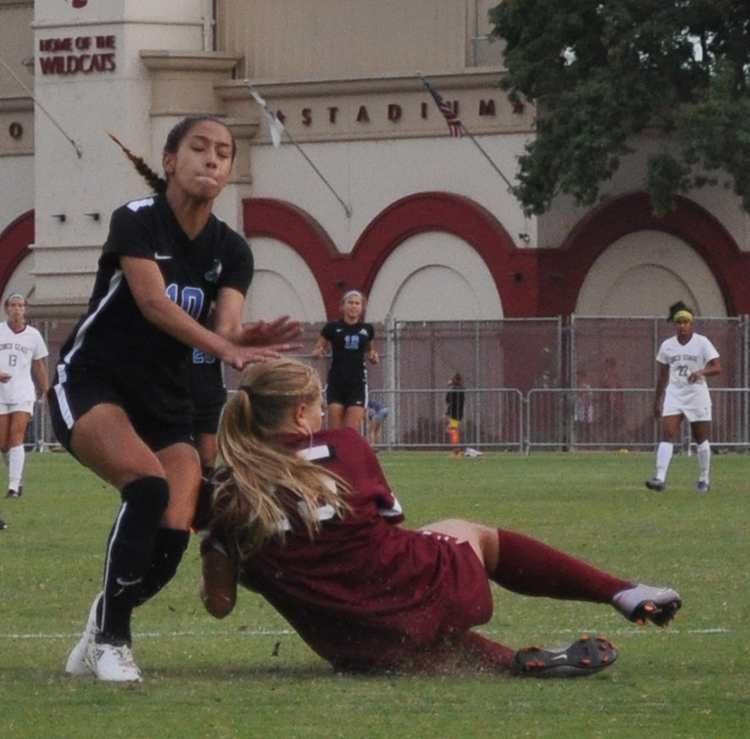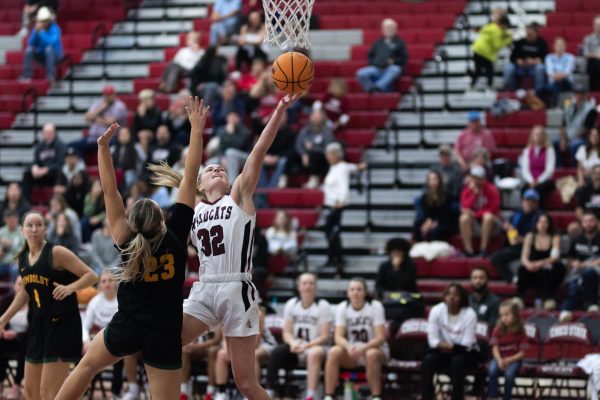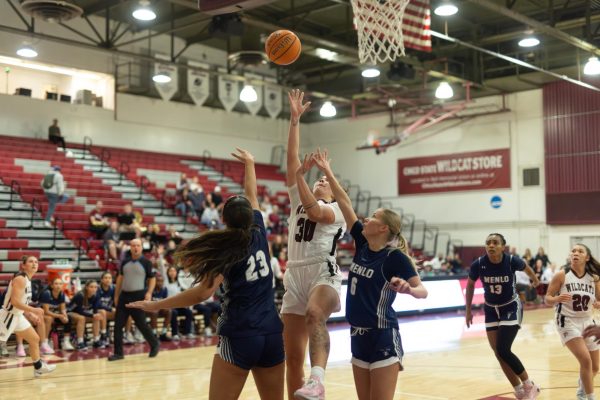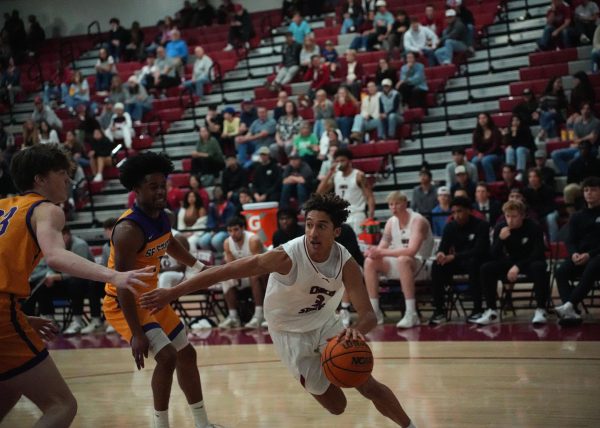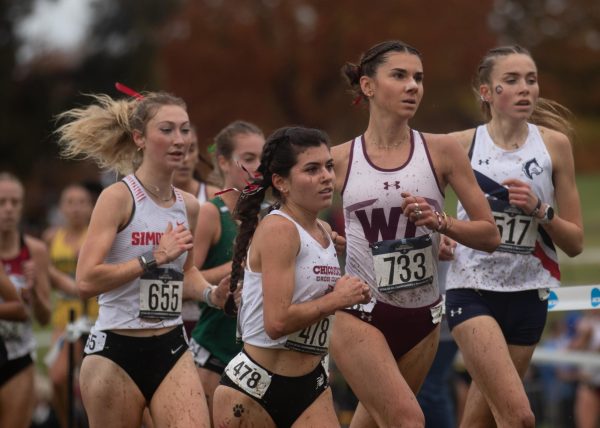NCAA foggy on concussion policies
First-year goalkeeper Caylin Stanley is brought to the ground after attempting to clear the goal. Photo credit: Makayla Hopkins
Editor’s note: Full Disclosure is a weekly analysis of athletics concerning programs at Chico State.
Concussions aren’t limited to football, and they don’t usually stop at one.
Athletes are 41 percent more likely to have another concussion after their first, according to a study done by Cedarville University.
Recently, first-year women’s soccer team goalkeeper Caitlyn Duval received a concussion causing her to miss two games of the season. Duval’s absence may have hurt the team, but the injury has affected her in more ways than just missed minutes.
A concussion occurs when the brain makes forced contact with the skull from impact. The result is confusion and incoherence, often leading to a slowed reaction. The aftermath of concussions is more severe than the initial effects, as athletes have reported difficulty in cognition and memory.
Duval is only one athlete of 5 to 10 percent the California Collegiate Athletic Association’s partner, the Sports Concussion Institute, says will receive a concussion playing at the collegiate level this season.
Chico State is a member of the CCAA and is a part of the NCAA Division II league. The NCAA has donated $30 million to aid concussion research and head trauma but has yet to address the laws surrounding student-athletes who suffer from them.
In the NCAA Constitution, it states that the responsibility of the student-athletes health and safety belongs to the institution they play for.
Despite refusing to take personal responsibility for its athletes, the NCAA oversees 23 sports, 400,000 student-athletes and over 1,000 colleges, including Chico State.
With a recent concussion affecting teams at Chico State and minimal help from the NCAA, the student-athletes gracing the courts and fields have more to worry about than just making it to the next level.



